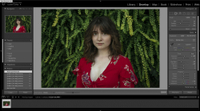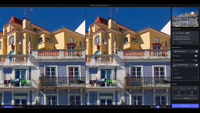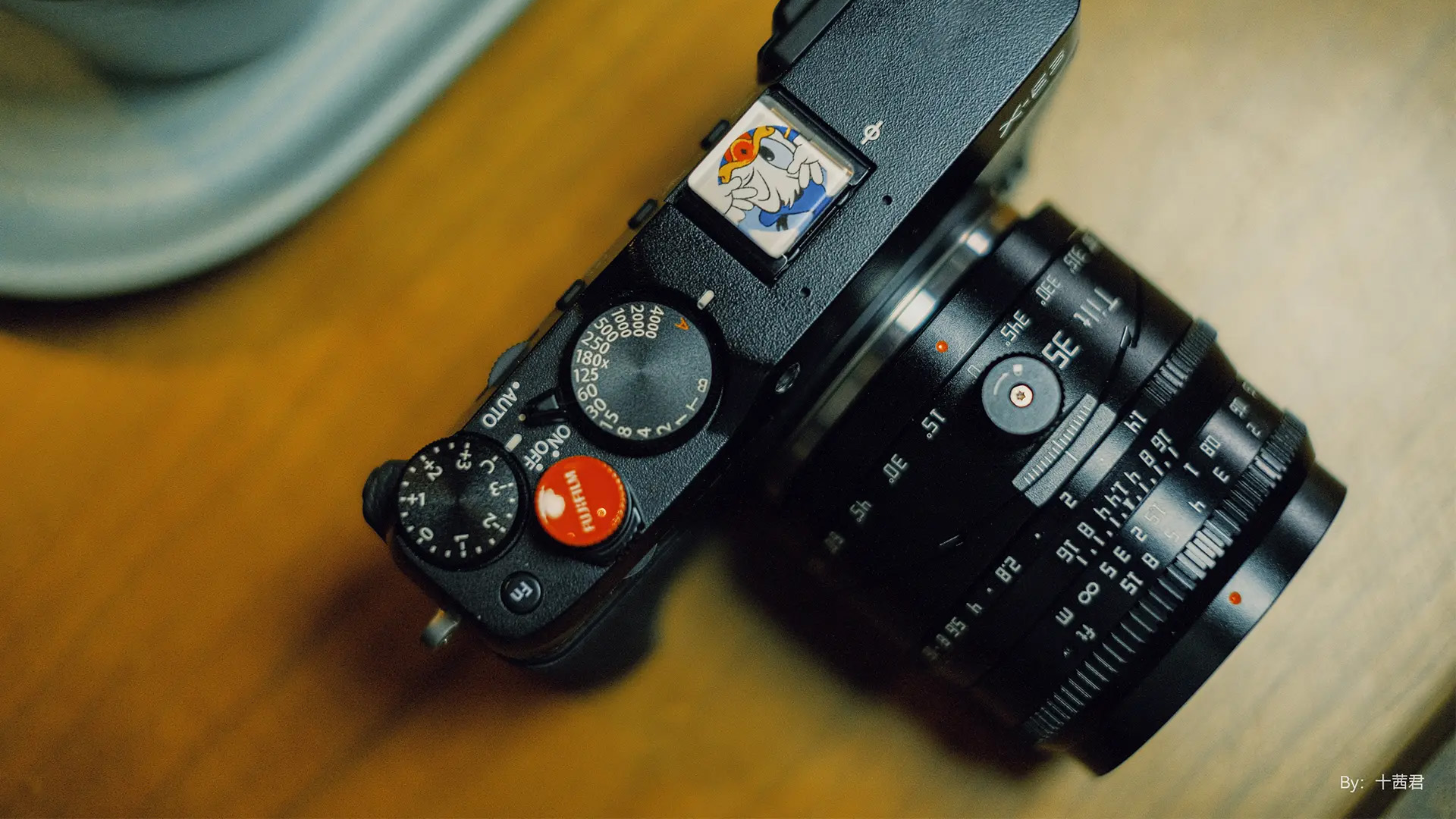Digital Camera World Verdict
DxO PureRAW 5 is still out on its own for raw processing, denoising and lens corrections. Lots of software companies now boast AI noise reduction, but DxO was the first and its latest DxO DeepPRIME XD3 process is still the best. It’s clearly superior to Lightroom’s Enhance tool, for example, which is perhaps its main rival in a raw workflow. Disadvantages include a fairly stiff price tag, hefty Linear DNG files and some occasional masking glitches.
Pros
- +
Exceptional high-ISO denoising
- +
Even more remarkable detail recovery
- +
Efficient standalone batch processing
- +
Effective Lightroom integration
Cons
- -
Quite expensive to buy
- -
Limited appeal for upgraders
- -
Big Linear DNG files
Why you can trust Digital Camera World
DxO PureRAW 5 is here, with a list of improvements and enhancements over the previous version. If you already have PureRAW 4, is it worth upgrading? And if you don’t even know what PureRAW is, then keep on reading to discover a tool that could completely change your idea about what your cameras and lenses are capable of.
DxO is well known in the photographic community for DxO PhotoLab, its flagship photo editor, its FilmPack 7 analog film simulation software, ViewPoint 5 perspective correction tool and the near-legendary Nik Collection. DxO’s key innovations are its precise lab-developed lens correction profiles and its AI-powered DeepPRIME noise reduction, and these are at the heart of PureRAW 5. It's a bit too specialized to be considered one of the best photo editing software applications, but it's designed instead to be used alongside them.
PureRAW 5 is essentially for photographers who already have a software workflow that they are happy with, but also want to make use of DxO’s powerful raw processing, lens correction and denoising technologies to tune up their raw files ahead of editing. You can use it as a standalone batch processing tool for converting raw files into fully-corrected JPEGs for use straight away, or as corrected Linear DNG files which can be used just like regular raw files in Lightroom, Capture One and other photo editors, but using DxO’s own processing not the software’s.
PureRAW 5 can also be used from within Lightroom. You can export unprocessed raw files from Lightroom, have PureRAW’s corrections and denoising applied and have the processed image returned to your Lightroom catalog in a single automated process.
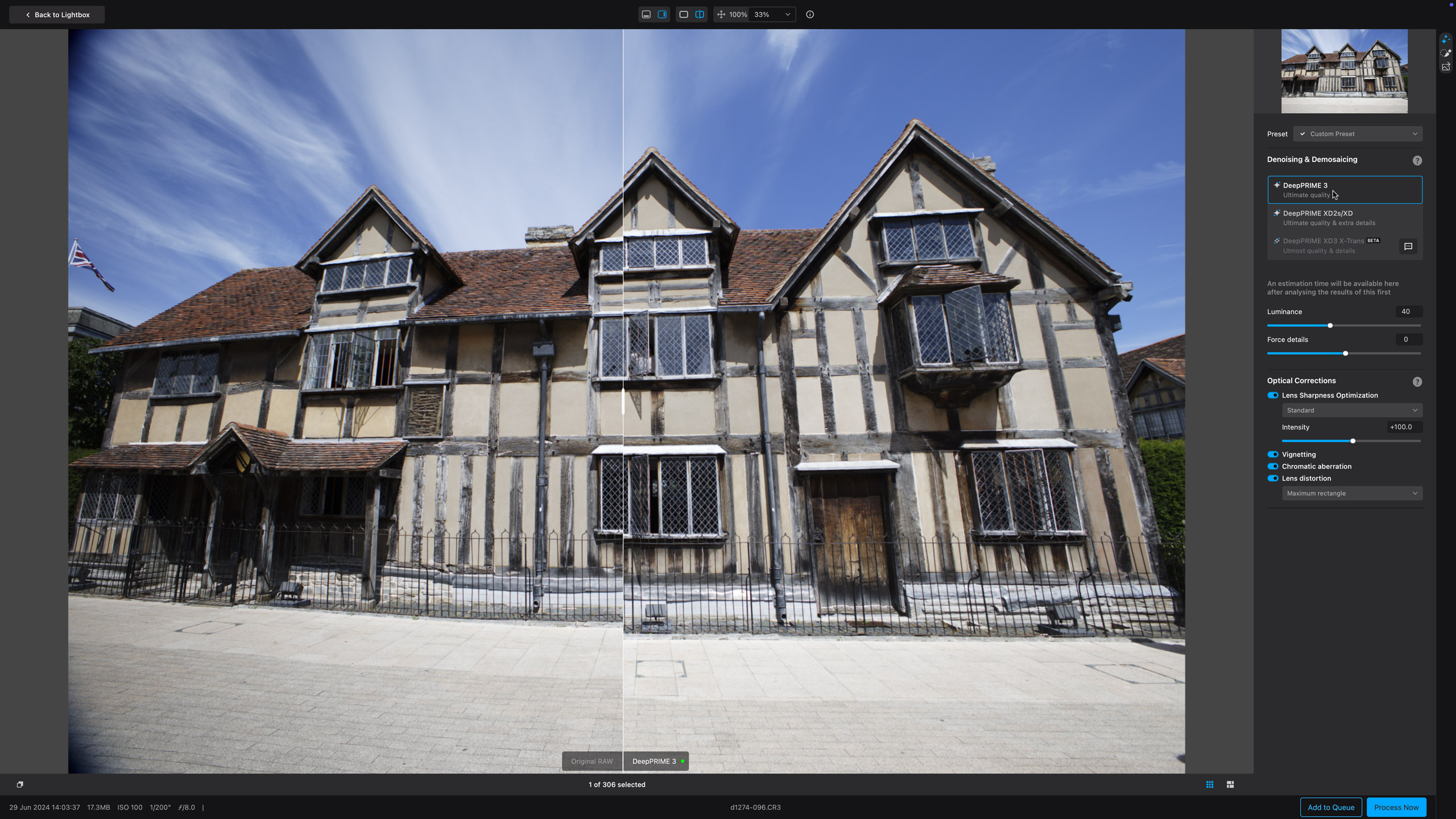
DxO PureRAW 5: Price and availability
DxO PureRAW 5 is available now and costs $119.99 / £109.99 for a new license, and $79.99 / £69.99 as an upgrade from PureRAW 4. That might sound quite expensive for a tool that simply applies correction profiles and denoising, but the quality of the results compared to regular raw processors speaks for itself. There is a free 14-day trial – not as long as the 30-day trials of some other DxO products, but plenty of time to see if PureRAW 5 is right for you.
DxO PureRAW 5: Interface and usability
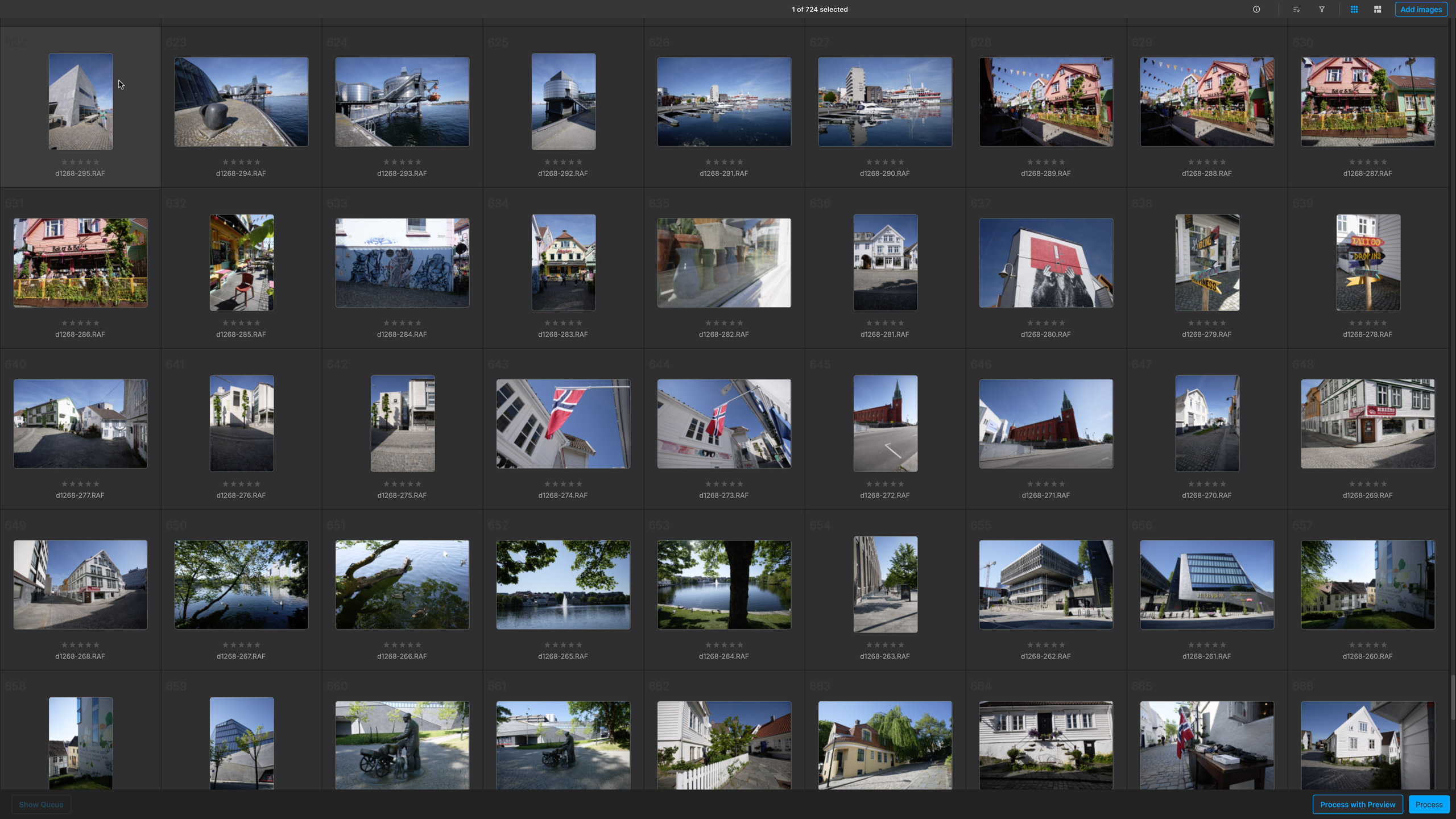
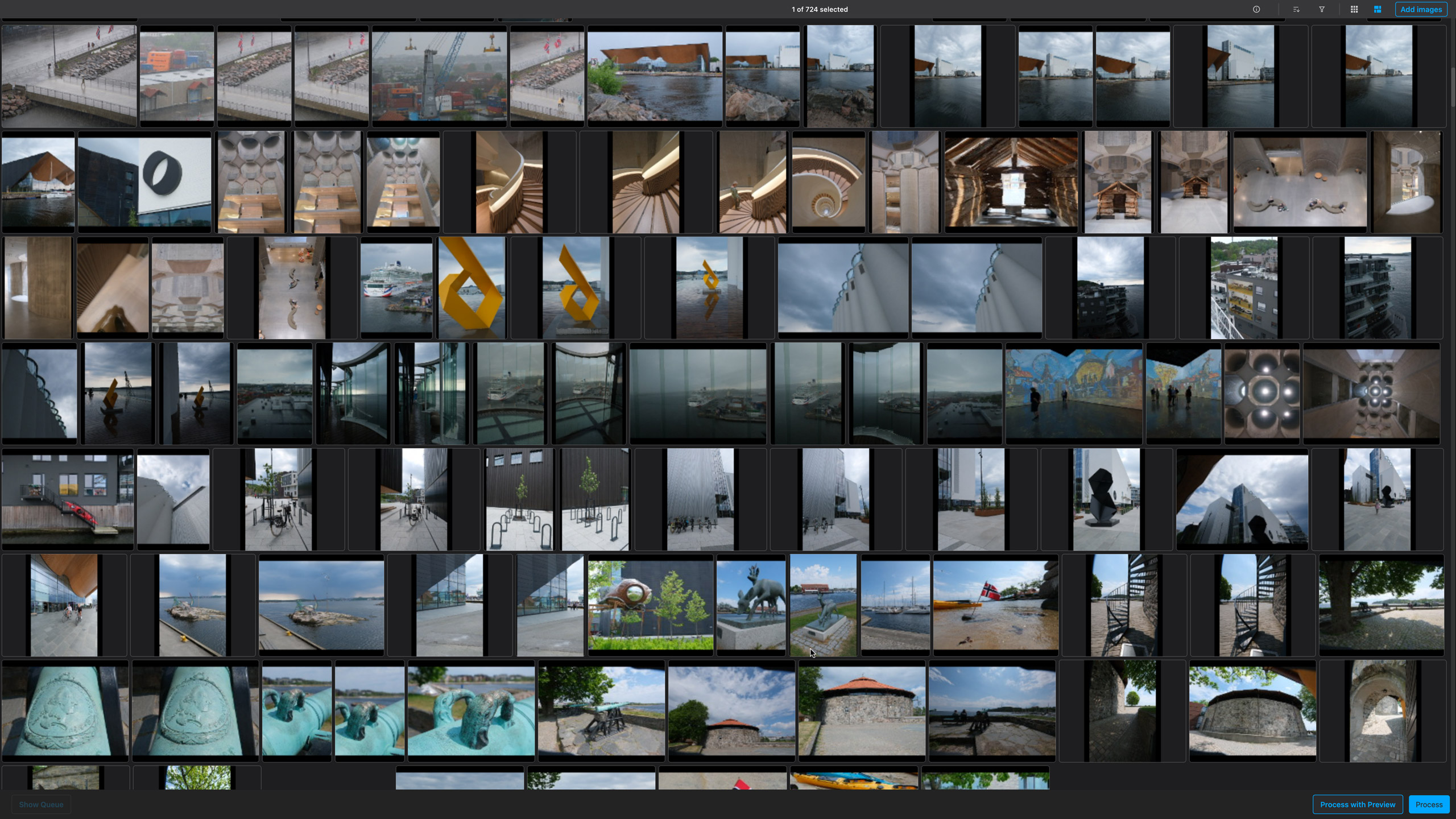
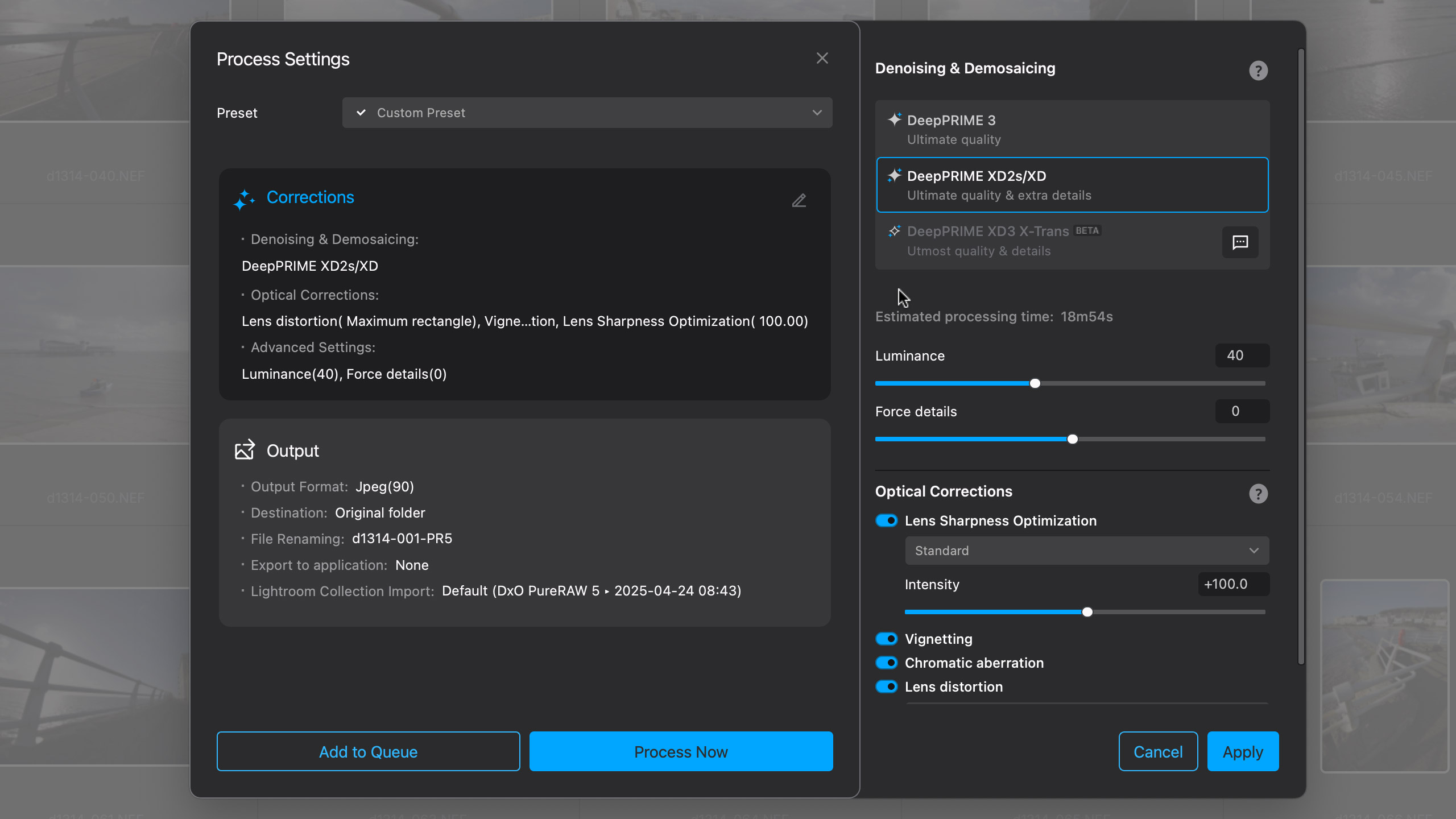
PureRAW 5 has had an interface overhaul designed to make it simpler and more efficient to use – though it was hardly difficult before. Let’s see what else is new in PureRAW 5 that might tempt existing users to upgrade and new users to take the plunge.
First off, PureRAW 5 comes with DxO’s latest DeepPRIME XD3 process, which DxO says yields even better noise reduction and detail rendering, tackles ‘residual chromatic shifts at a pixel level’ and processes images faster than before.
For owners of Fujifilm cameras, the news is even better. PureRAW 5 now offers DeepPRIME XD3 processing. Note that this is currently in beta form (there’s a feedback button) and it does not support the latest X-Trans 5 sensors, reverting instead to the DeepPRIME XD2 process for these..
Fujifilm’s unique X-Trans color filter array has posed problems for some raw processing tools – Lightroom can struggle from time to time and doesn’t always give the sharpest results with X-Trans images – and it’s been an issue for DxO in the past too. DxO’s X-Trans support has arrived comparatively recently and is very welcome, especially since it seems to be catching up with the latest DeepPRIME processing.
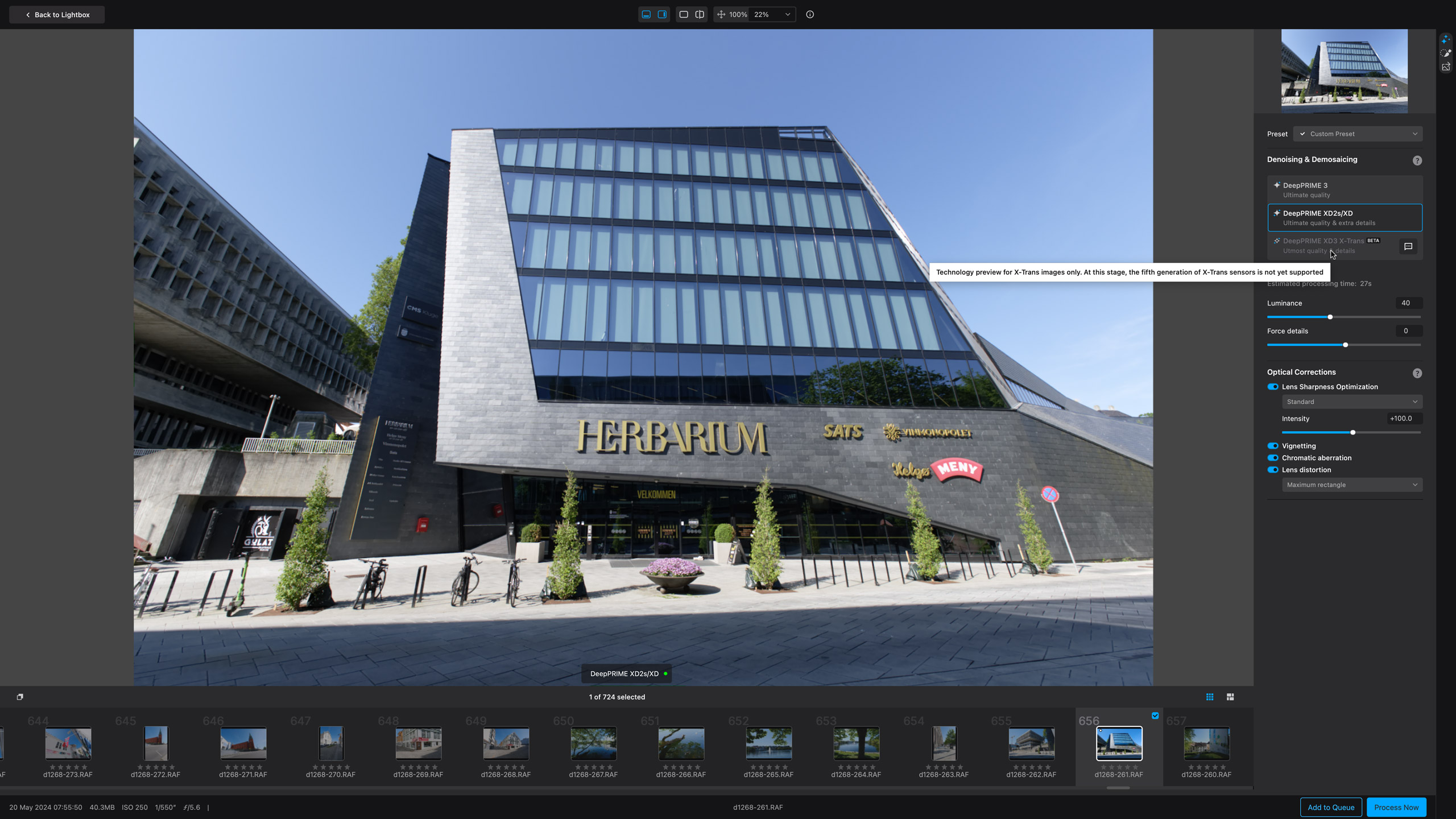
PureRAW 5 also brings local adjustments, for those who want maximum control over the processing parameters. You use a simple brush tool to mark out subjects and areas where you want to apply different sharpening and detail rendering settings, and you can create multiple masks for different areas. The masking tool is quite basic, but since it’s only for varying the processing, not tones or colors, it doesn’t need to be complicated.
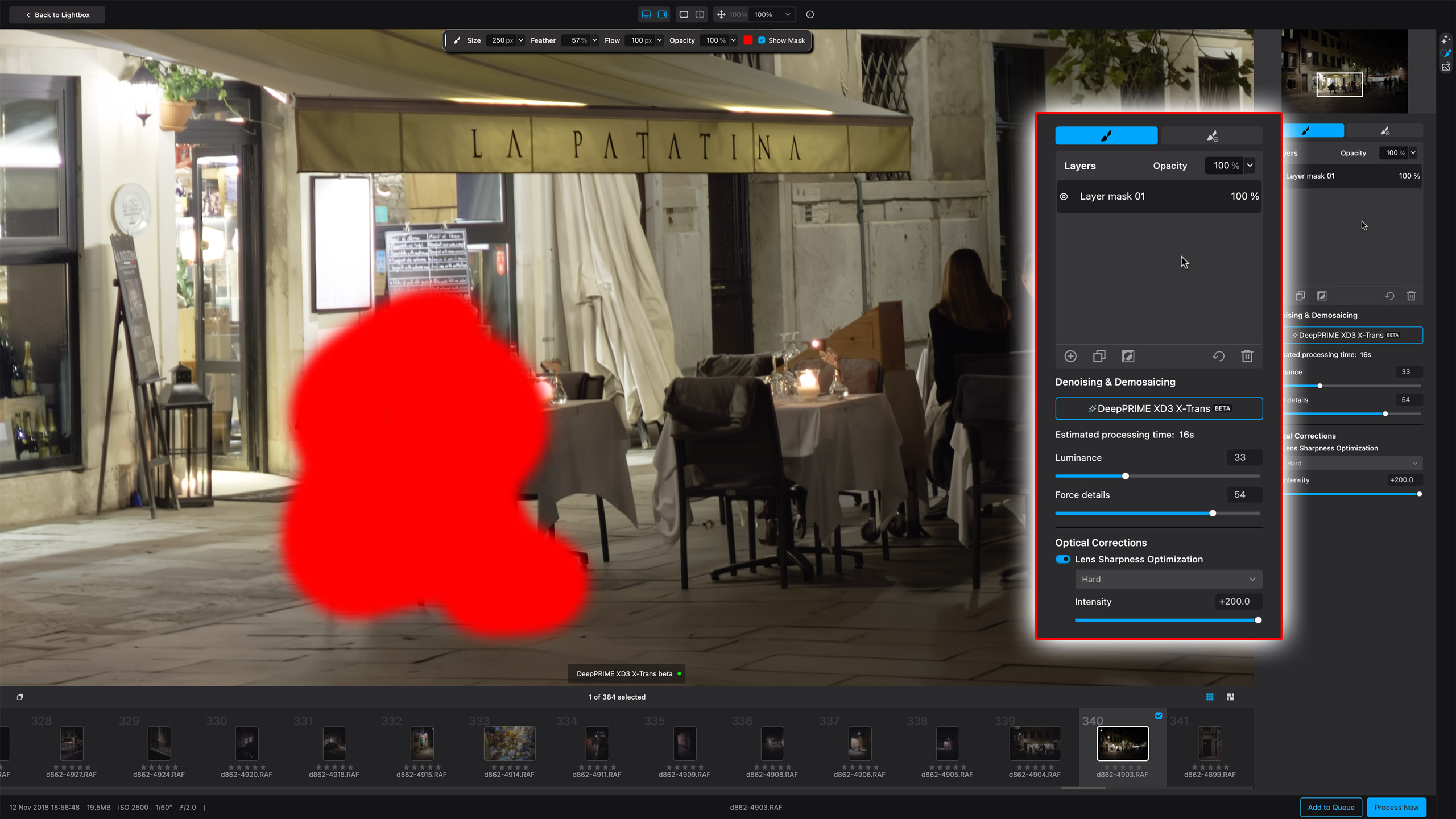
Used as a standalone application, PureRAW 5 is really easy to operate. All you have to do is add images to the Lightbox and start processing. PureRAW will automatically find the matching lens correction profiles. You can process images automatically ‘unseen’ or use the ‘Process with Preview’ option. Here, you do get to see what your processed images look like, and you can zoom in to check the details. The DeepPRIME processing is not instantaneous, so it might take a second or so to redraw the image as you pan around, and exporting a processed image does take maybe 10 seconds or more, depending on the resolution of the file and the speed of your computer.
Over in the right sidebar you can choose the DeepPRIME process you want to use – the older DeepPRIME XD2 is here too, and DxO has said in the past that earlier versions will give you different results that you may prefer for some images. You can also choose whether to export Linear DNG raw files or JPEGs – and if you export JPEGs you can opt to apply DxO’s Smart Lighting feature to even up the exposure and maximize the dynamic range.
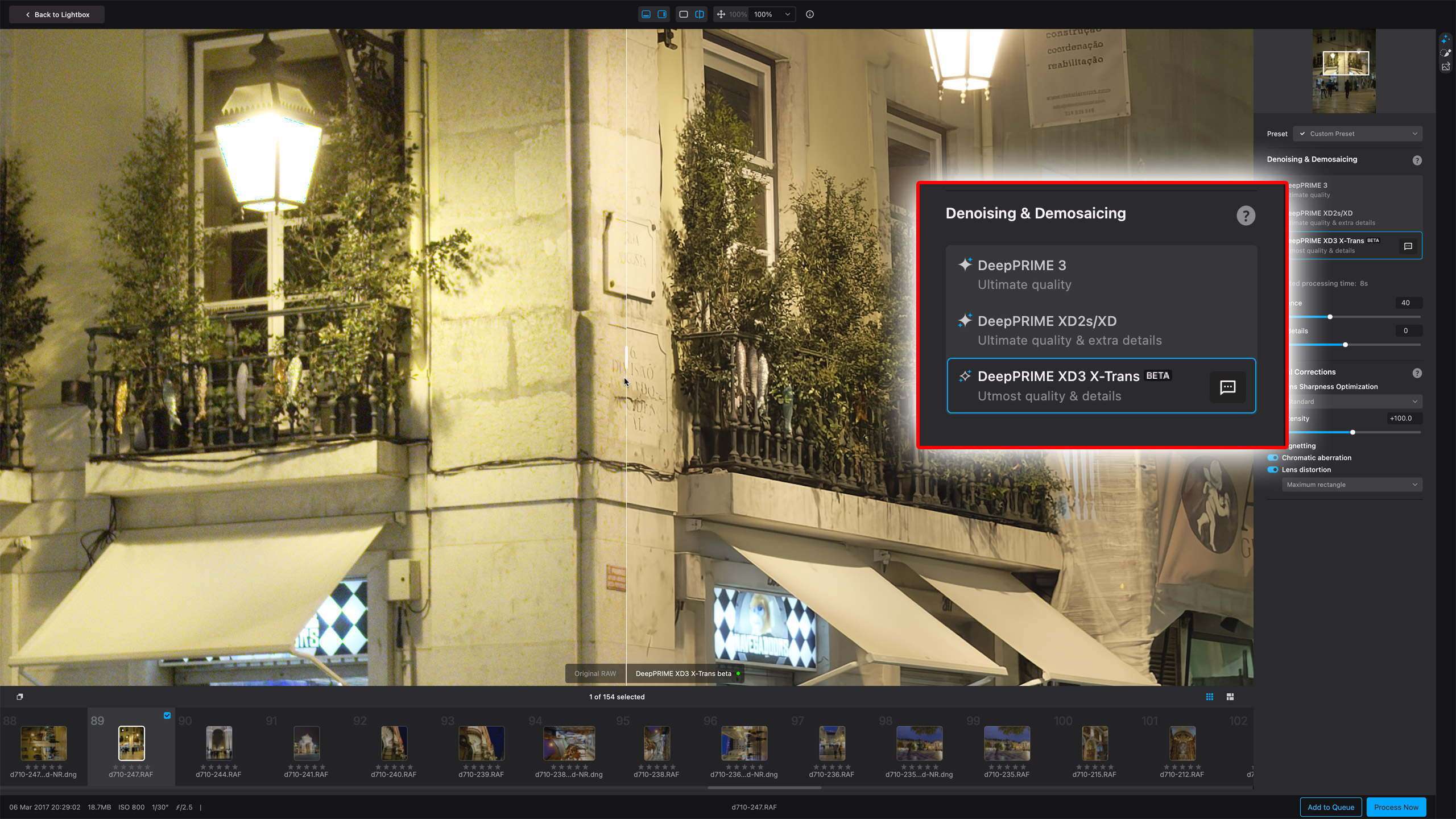
Another new feature in PureRAW 5 is the ability to create and apply processing presets. It’s a small workflow change but a useful one, because you can now quickly swap between processing recipes without having to check half a dozen individual settings.
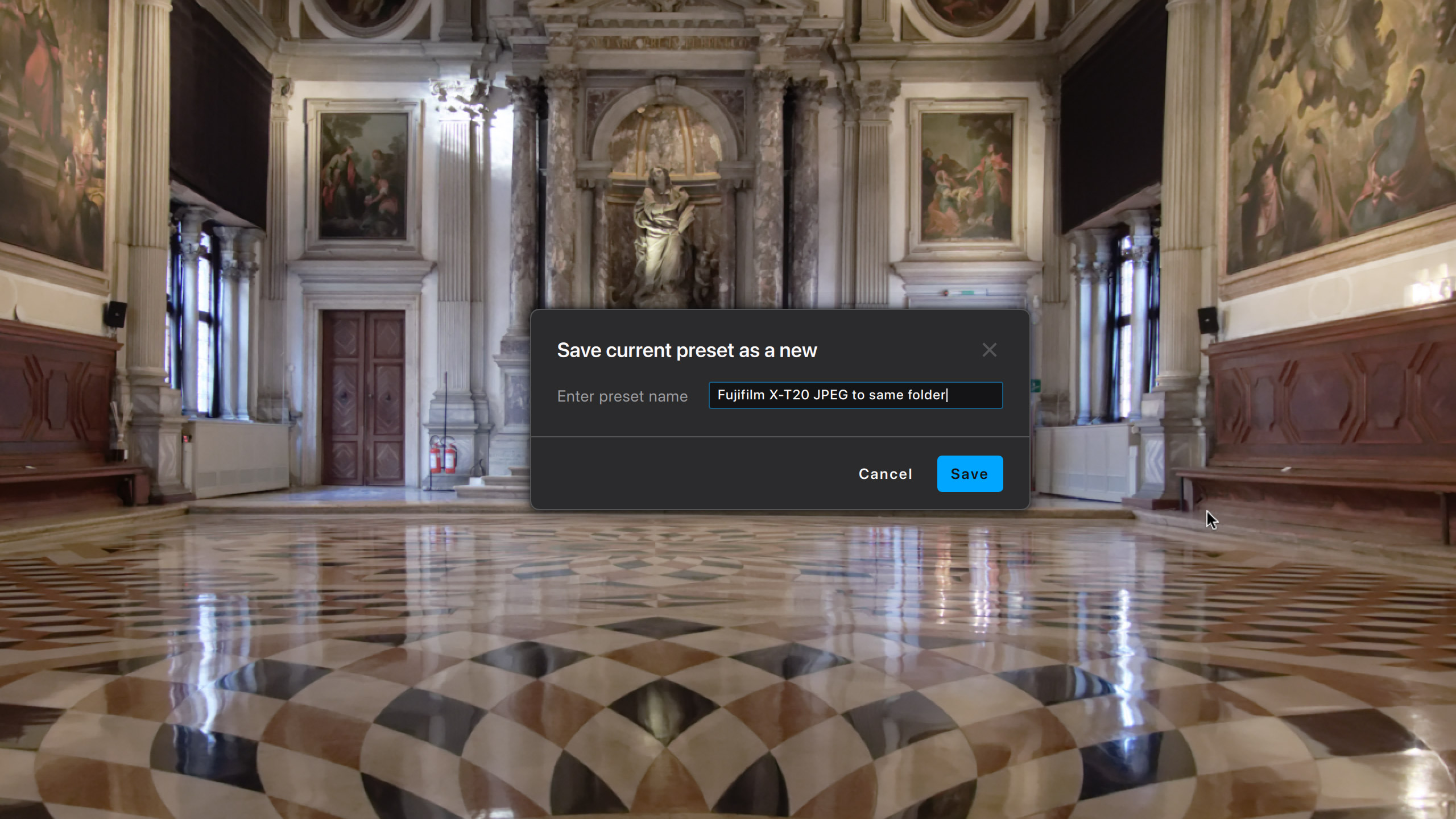
Used as a Lightroom add-on, PureRAW 5 is just as easy to use. You have to wait for it to export the image, process it and return it, but once it’s back in Lightroom it’s ready for editing. What’s especially neat is that if you’ve already done some editing work in Lightroom, your edits are automatically applied to DxO’s DNG raw file.
DxO PureRAW 5: Performance
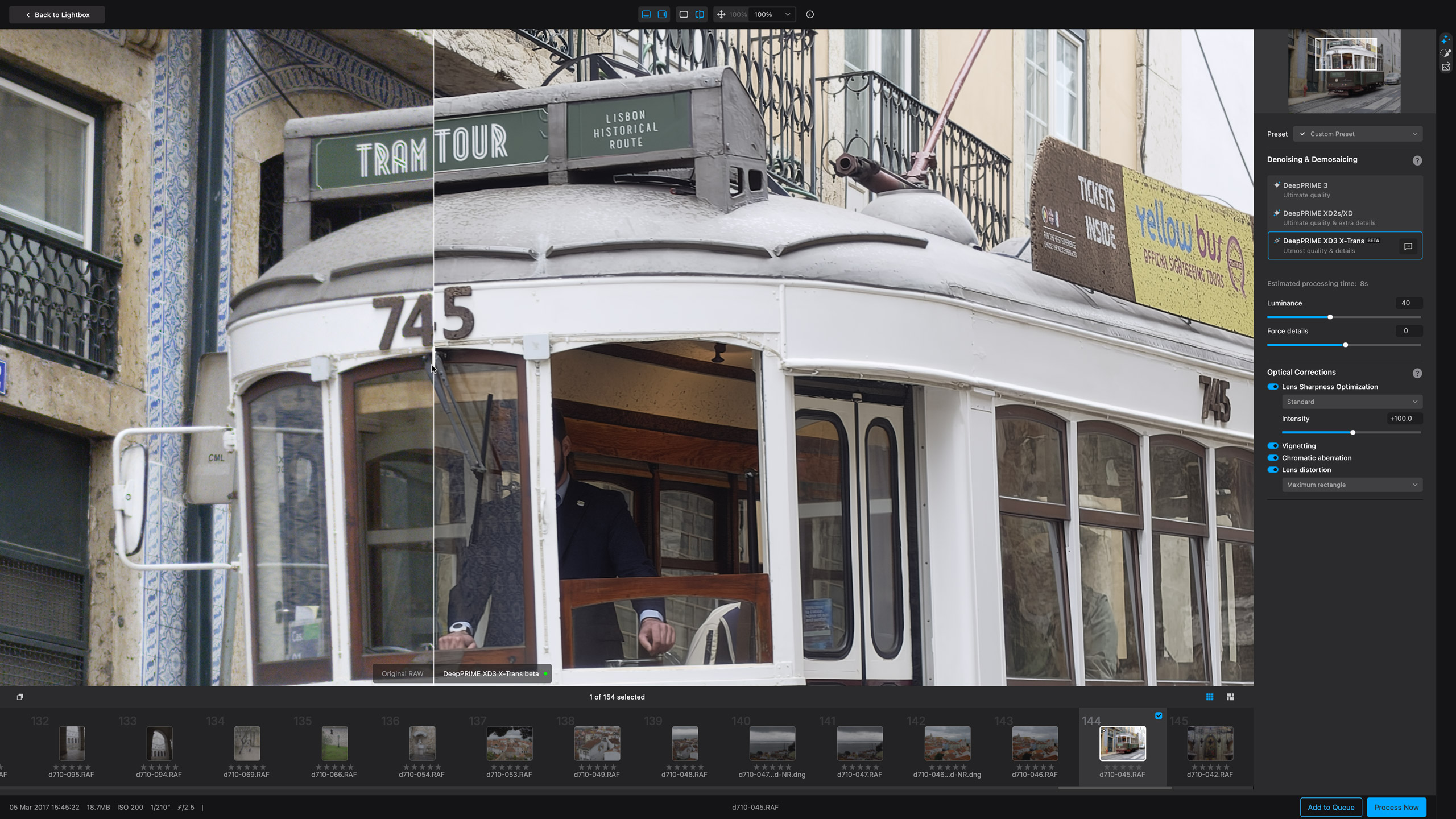
I did run into an issue with this when testing PureRAW 5.0.0. Sometimes, after painting on a mask it would shift to the right when the mouse button was released. The amount of the displacement seemed to depend on the degree of lens distortion correction applied, and it only happened with some camera/lens pairings and not others. It did make it difficult to mask areas over on the right side of the image. I’m sure this will be corrected with a future update, but I mention it just in case any early adopters are seeing the same thing.
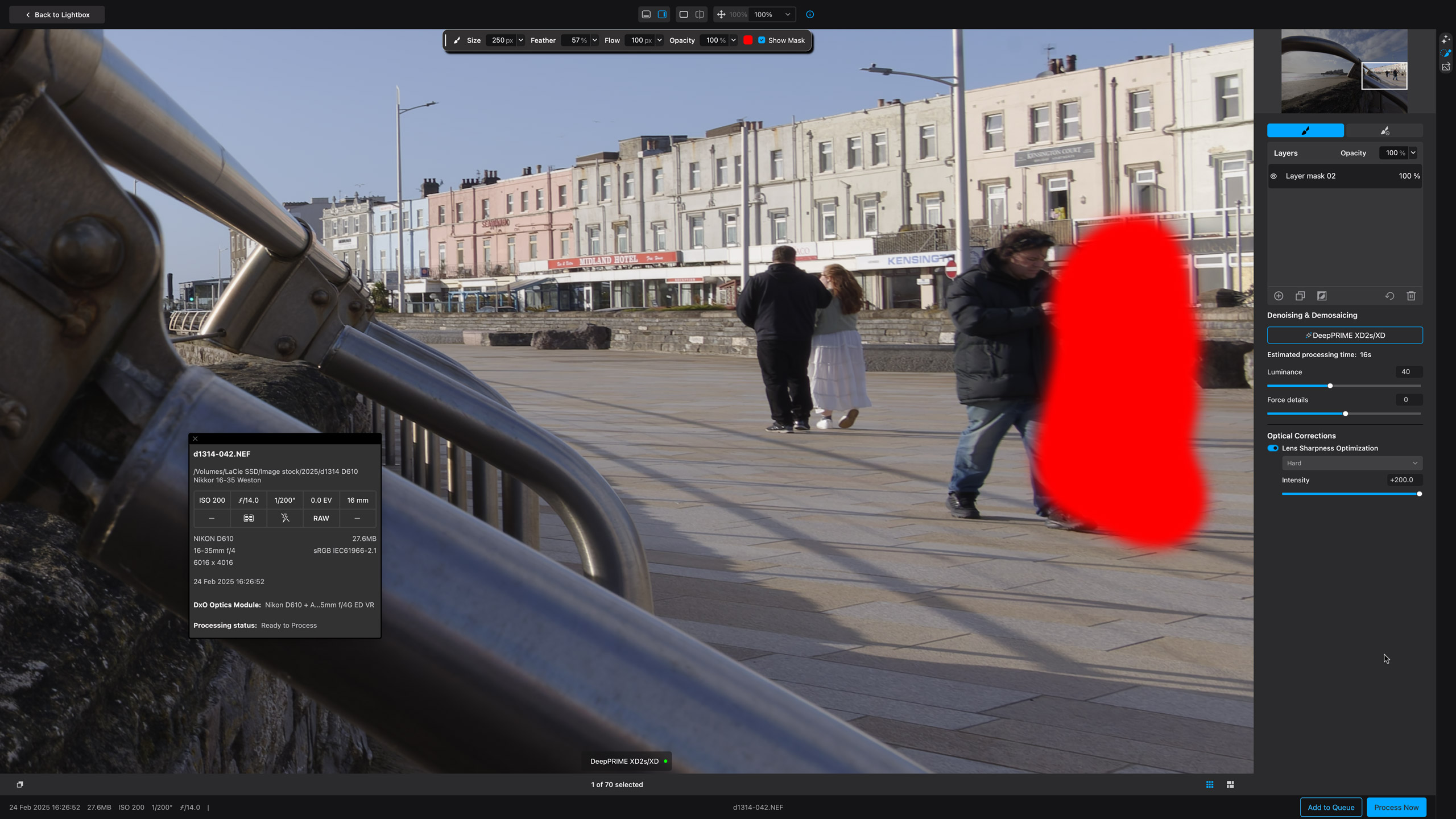
But what are the results like? Well, Lightroom already has its own Enhance option for noise reduction and detail enhancement, but when you compare Adobe’s results and DxO’s side by side, it’s clear that although the noise reduction capabilities are similar, PureRAW’s detail rendering is way ahead.

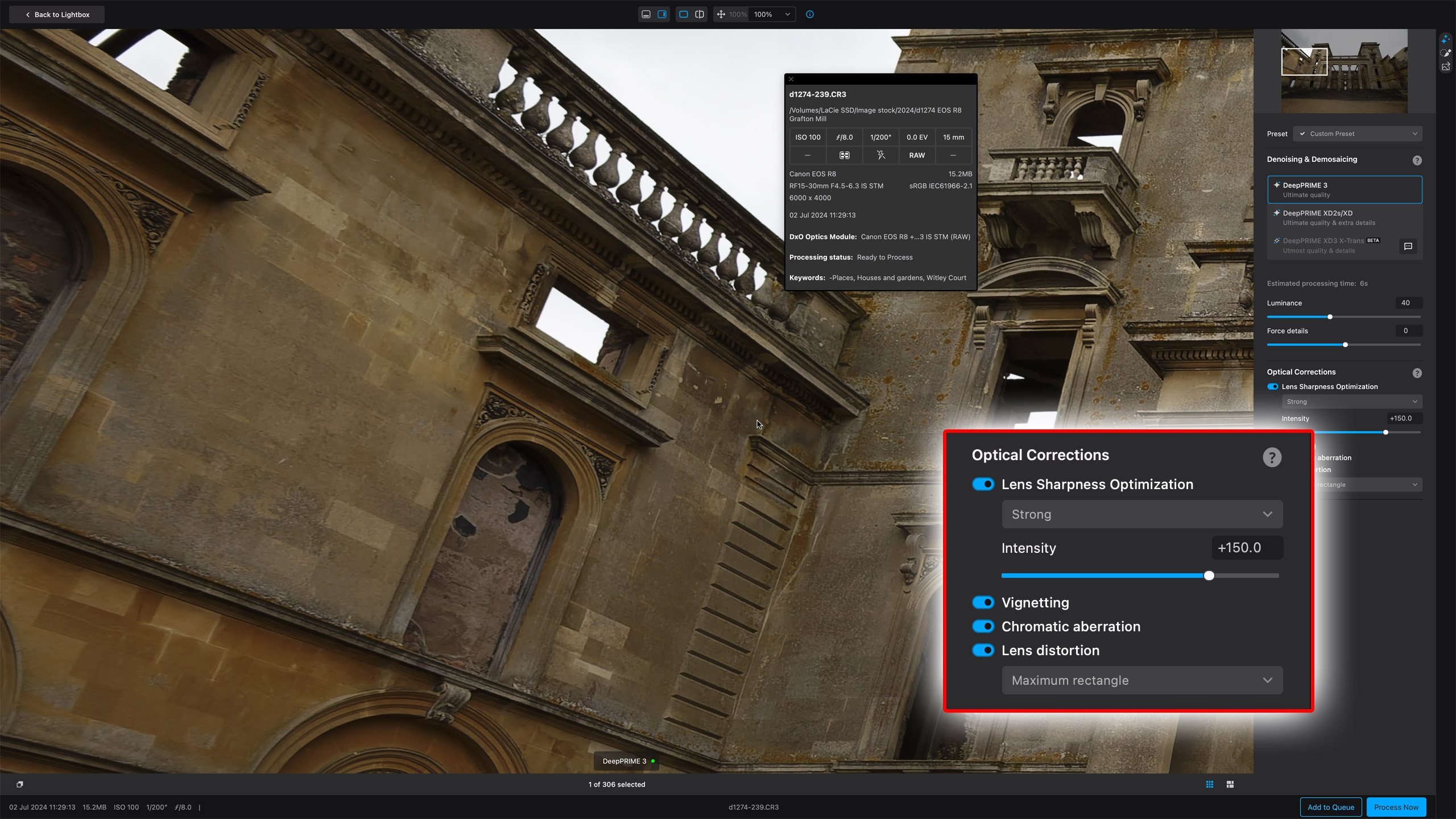
Put simply, PureRAW’s results are stellar. DxO’s regular raw processing and noise reduction is very good, but the DeepPRIME processing takes it to a whole new level. You can feed it images shot at ISO 6400 and get back images that look like they were taken at ISO 200 – and that’s no exaggeration. There’s none of the smudging and smoothing of old-school noise reduction tools. What you get here is crystal-clear detail at a level you probably never suspected your raw files actually had. Admittedly, the AI is probably making some educated guesses at what it thinks ought to be there, but it’s done so well that you just can’t tell. I did occasionally get some odd-looking human faces when they were small in the frame, but that was with older, lower-resolution cameras at high ISOs where the DeepPRIME process was clearly having to work very hard indeed.
The only thing is… DxO’s Linear DNG files are very large, sometimes 3-4 times larger than the original raw file. Adobe’s own ‘Enhanced’ Linear DNGs are altogether smaller, sometimes not even double the original file size, so it’s something to consider. If you’re going to run all your raw files through PureRAW 5, you’re probably going to need some bigger drives.
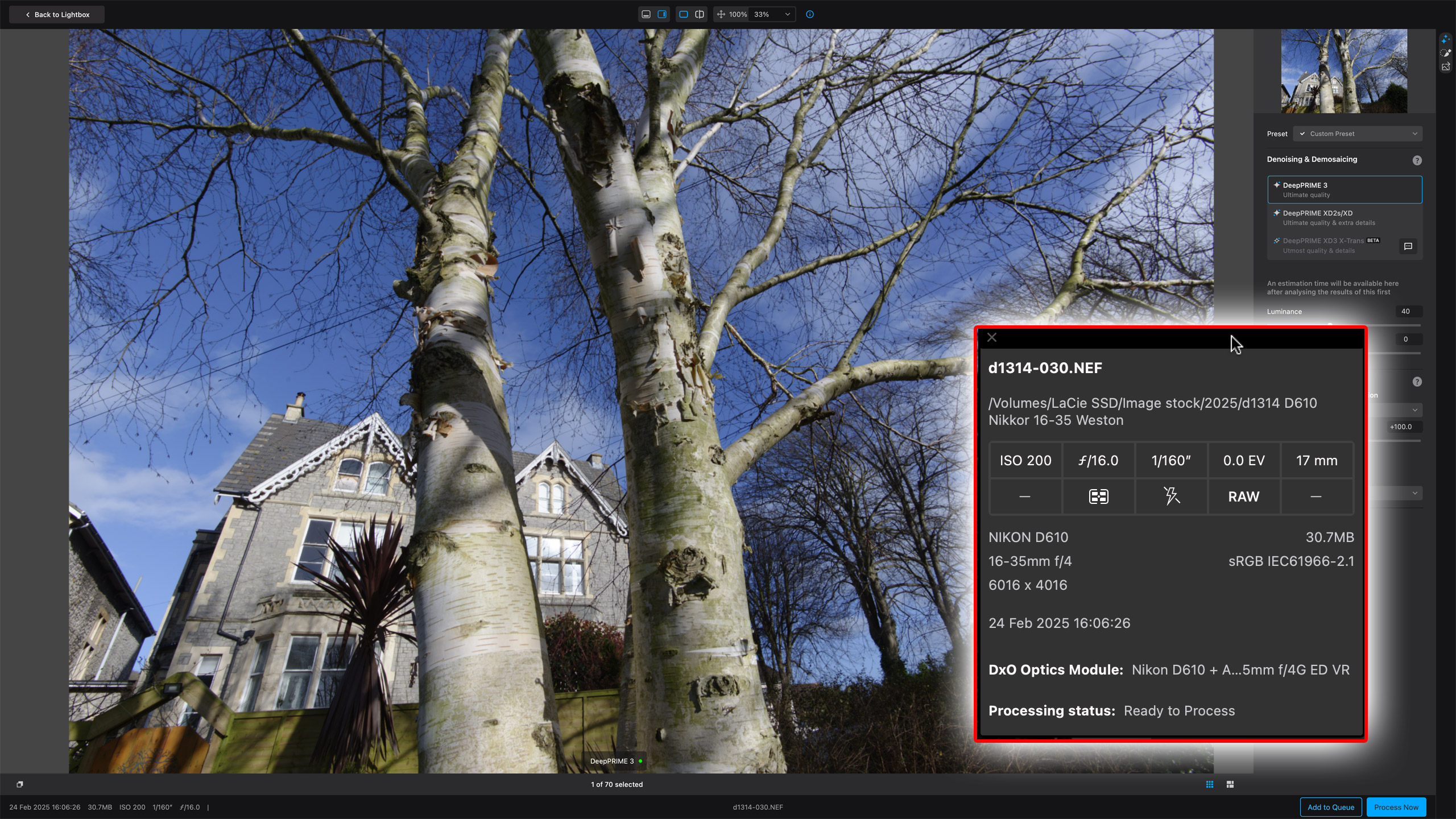
So is DeepPRIME XD3 visibly better than the XD2 process in PureRAW 4? Probably, but it’s close. On the images I tested I occasionally thought I could see the difference in fine detail, but mostly I just couldn’t see any difference at all. The X-Trans processing has, however, taken a big leap forward, so I don’t think Fujifilm shooters will be disappointed.
And with all the talk about DeepPRIME XD3, let’s not forget to talk about DxO’s lens correction profiles. The company has recently announced a milestone 100,000 camera-lens combination profiles, each one derived from lab testing and scientific measurement.
Lots of photo editors now offer lens correction profiles, of course, so you may not notice much difference between Lightroom’s distortion correction, corner shading correction and chromatic aberration correction and DxO’s – but DxO’s profiles also apply edge softness correction, so if you do have some lenses which are a little weak at the edges, PureRAW 5 will make them look a whole lot crisper.
DxO PureRAW 5: Verdict
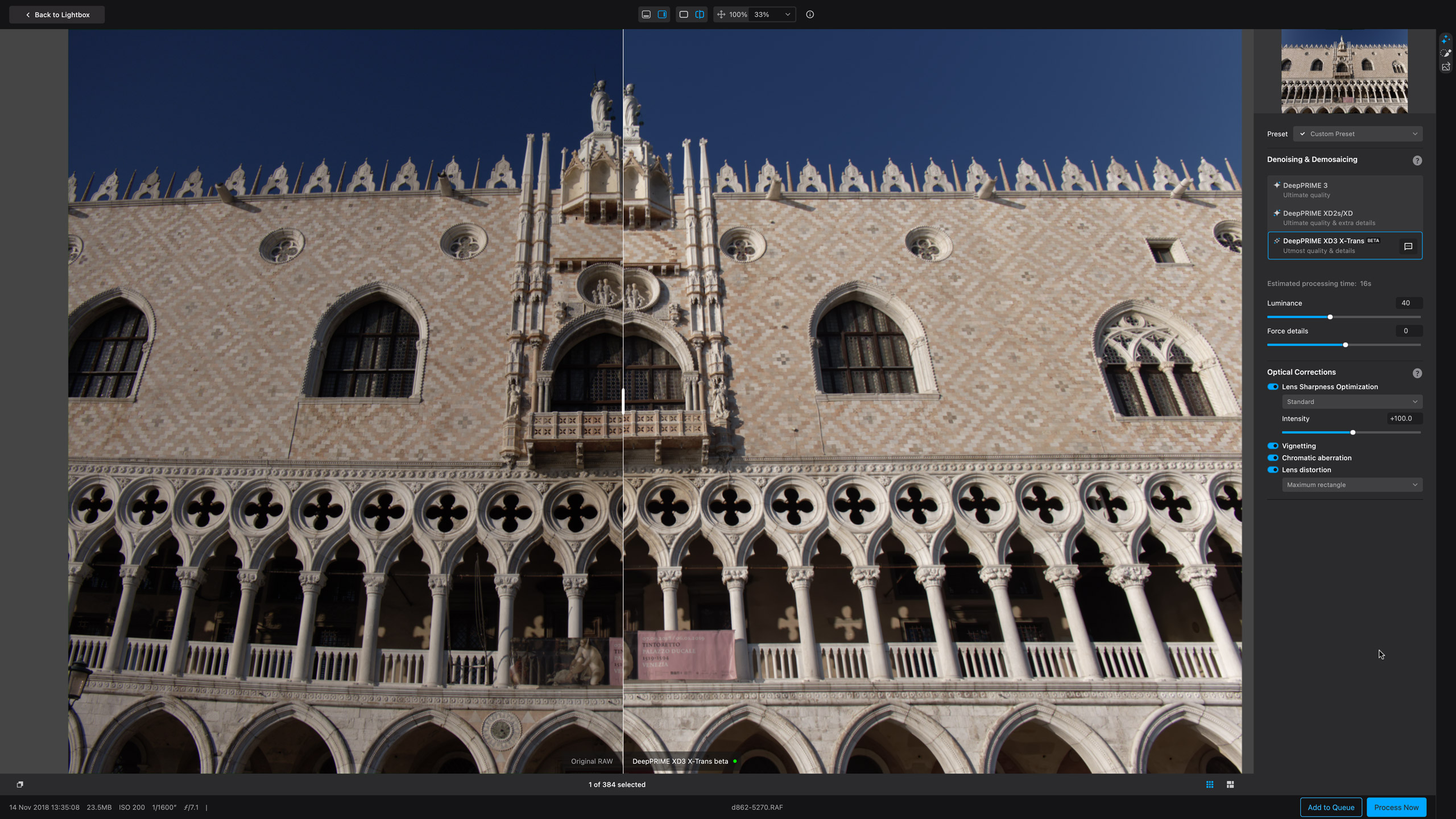
DxO PureRAW 5 is a remarkable tool. It can extract a level of image quality from your camera and your lenses that could make you completely rethink your equipment’s potential, especially at high ISO settings. It’s that good.
It’s also quite expensive, so it’s not a purchase to be undertaken lightly. And while its Linear DNG files offer remarkable image quality, they can be 3-4 times larger than your original raw files, so that’s a storage overhead that can quickly build into a problem. (Though you can also export JPEGs with the same lens corrections and denoising.)
Nevertheless, if you haven’t used DxO PureRAW before, PureRAW 5 is the most compelling version yet, not least because of its X-Trans sensor support (still in beta, but seems to work fine), but also because of its workflow improvements.
If you’re already using PureRAW 4, though, it’s not so easy to make a case for upgrading, particularly if you have a non-Fujifilm camera. The new DeepPRIME XD3 processing may be better than the previous DeepPRIME XD2, but the differences are subtle and you may decide it’s not worth it. I’m also not convinced that the new local adjustments are really all that necessary or useful – but others may disagree.
Features ⭑⭑⭑⭑⭐︎ | It’s not a long feature list because PureRAW does just one job, but everything you could ask for is here. Score 4/5 |
Design ⭑⭑⭑⭑⭑ | DxO has made some useful changes to the PureRAW workflow to make it faster and more efficient. |
Performance ⭑⭑⭑⭑⭐︎ | Early glitches notwithstanding, PureRAW 5 still sets the standard for raw denoising and lens corrections |
Value ⭑⭑⭑⭐︎⭐︎ | PureRAW 5 looks expensive for a simple raw ‘batch processor’, but its value lies in its results, not in its scope. |
DxO PureRAW 5: Alternatives
Adobe Lightroom/Classic has its own in-built Enhance denoising and detail enhancement option. It’s not as good as PureRAW 5 but it may be good enough for your needs.
Topaz Photo AI is an interesting alternative with plenty of fans, though it doesn’t work as a raw ‘pre-processor’ in the same way as PureRAW 5.

Rod is an independent photography journalist and editor, and a long-standing Digital Camera World contributor, having previously worked as DCW's Group Reviews editor. Before that he has been technique editor on N-Photo, Head of Testing for the photography division and Camera Channel editor on TechRadar, as well as contributing to many other publications. He has been writing about photography technique, photo editing and digital cameras since they first appeared, and before that began his career writing about film photography. He has used and reviewed practically every interchangeable lens camera launched in the past 20 years, from entry-level DSLRs to medium format cameras, together with lenses, tripods, gimbals, light meters, camera bags and more. Rod has his own camera gear blog at fotovolo.com but also writes about photo-editing applications and techniques at lifeafterphotoshop.com
You must confirm your public display name before commenting
Please logout and then login again, you will then be prompted to enter your display name.

